
Getting me through the worst job
Collision Course by Link Park and Jay-Z
love a good story
Collision Course by Link Park and Jay-Z
In Summer time graduation trip, an eerie bathhouse beneath a picturesque inn hides a mysterious secret.
Not a single person speaking… And during the whole time we were there, not a single person got up…
Hezi describes her experience in the bath house
A woman recalls her time after her graduation thirty years ago. During that time, she and a friend took a trip to a holiday inn towards the north-west of the country. The place was relaxing and surrounded by beautiful scenery. However, hidden beneath the inn was a bath house with an eerie secret.
On arriving at the inn, the pair decide to investigate the local facilities — first on their list was the bathhouse. As they descend the steps towards the bathhouse below, they notice how the stairwell seems to take far longer than it should do to get down. In fact, the further they go down, the darker the bottom seems. Then as they look back up the way they came, nothing but darkness there too.
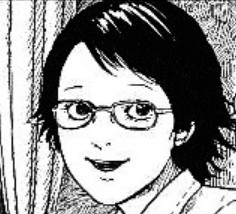

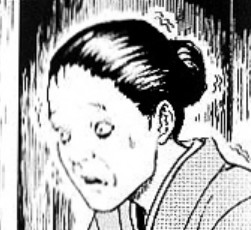

Before long, they pass a strange woman who is walking towards them up the steps. This woman is lit only by a small lantern she is carrying. She nods to them that they are heading in the correct direction to the bathhouse. Then as if by magic, they are at the foot of the steps, feeling the steam from the bath behind the door.
The main character then takes off her glasses before entering the large bath, severely limiting her vision. It is one of those large public steam baths. Sat in the water, she can make out shapes of people close to her, but can make out none of their facial features. She just sees shapes and shadows in the steamy water around her.
Suddenly, her friend Hezi taps her on the shoulder and urges her out of the water and to leave with her immediately. But what did Hezi, with her much more attuned eyesight, see in the bath’s waters? What was it that the main character could not see? And just who was that mysterious figure in the stairwell?

At first read, I couldn’t really think of how to approach writing about Summer time graduation trip. You see, it kind of ends just as it seems to begin. We get introduced to the location of the inn, then we see the mysterious lady who passes them in the hall. Following that we get the reveal of the strange people in the bath, all with their heads facing away from the girls. And then just as the inn worker seems to be about to reveal a clue to move the story along, it ends.
After reading some comments by others, I was introduced to the idea that this could actually be a troll ghost story. In fact, it’s a ghost story where the characters actually make smart decisions and get out before anything bad happens to them. If the story had taken a normal route, then perhaps the maid would have revealed a history of the building and the origins of the lady on the stairs. This would probably have led to some investigation, followed by some trouble with ghosts.
But what’s almost funny is, is the girl just stops the maid in her tracks and screams “Never mind, Ma’am! […] If we continued to listen to her, it might turn out to be really scary, right?”. In fact, the more I think about this story, the more I’m convinced that it is in fact a comedy. But it’s only a comedy in the punchline, like a dry-witted comedian who you didn’t realise was telling a joke until you find youself laughing at the end.
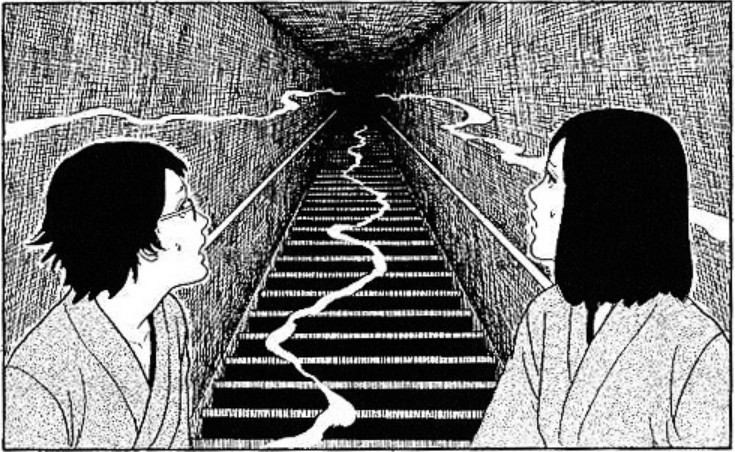
Although I respect Junji Ito for taking a chance on the story in how he ended it, I cant help but want more of the story revealed. If only the girls had taken the other route, and pursued a line of enquiry that would have inevitably meant risking their lives and possibly their sanity.
I loved the imagery of the bath house full of people too, all with their backs to the girls. We are left to wonder whether they are perhaps disfigured or dead… or both. Maybe it’s like a nightmare where if they are turned around they would reveal nothing more than the backs of their heads once again.
And that lady on the stairs too. She seemed like an interesting chaarcter, carrying her small lantern and apparently disappearing up the steps behind them. What was her purpose? Was she some kind of overseer of the dead below? Was she evil? Good? Or maybe an impartial lost spirit just searching for rest?
Maybe it was all some lost potential for a longer tale? Or maybe it was further strokes of genius from Junji Ito, in letting us imagine for ourselves just what was happening at that inn.

Summer time graduation trip is one of Junji Ito’s manga stories that has had to take time to grow on me. I don’t think I really “got it” on first reading. I may have even thought I didn’t have the complete version — I don’t remember. But it has grown on me and even makes me smile when I think about the ending to this one.
It’s a risky choice to write a ghost story but then end it before any meaty ghost encounters occur, but if there’s one thing I’ve come to expect from the master is that he isn’t afraid to take some chances. If you want gory or ghosts, or people with seemingly doomed fates, then you can find those aplenty amongst his other works.
However, with Summer time graduation trip what you are getting is, as I believe, a tongue-in-cheek ghost story. I can even picture Ito watching your reaction as you approach the end, just to see if you get it. I mean, I could be completely way off, but these are just my opinions. Let me know in the comments if you have any other takes on this one.
Mountain of Gods is one of the chapters in an anthology of manga stories about mountain demons called Yama Kaidan. Yama Kaidan roughly translates to “Mountain Stairs”.
That man wasn’t smiling. He was sneering at me with immense hatred.
Ishida describes his encounter with The Sneering Man
This story tells of three hikers who are comparing their past hikes with one another. However, the story soon veers into the spooky as the subject of a recently-missing woman hiker comes into the conversation. All that they know is that she went out hiking from the same cabin they now sit in, happy as can be – according to the cabin manager, but who was discovered dead at the foot of a snowy drop.
This brings to mind eerie encounters that each of them has had on their past hikes, which they each describe in turn. One tells of becoming alone on a mountain-top path before seeing a very thin, sneering man coming towards him at an unnatural pace. Another tells of a similar face pressing its way through his tent, Freddy Krueger style.
But will the mystery of this sneering man (is it even a man?) or the death of the lady hiker ever be solved?
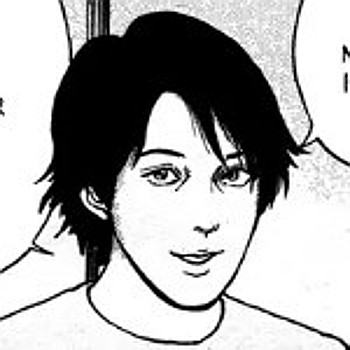
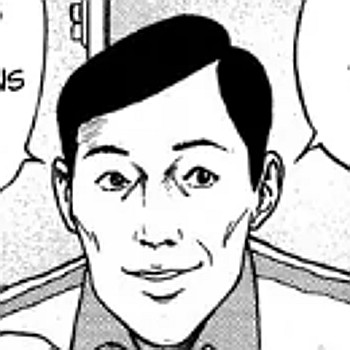
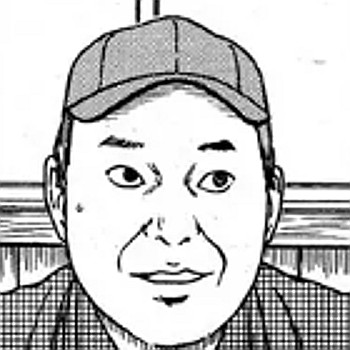
I think that this story is supposed to do what nearly all ghost stories do. It tells of an unnatural occurrence with some malevolent force, but never gives any explanation of it. This is told purely from the perspective of the hikers in the cabin and their own memories and imaginations on what they think could have happened. We are left to wonder whether there even is such a person as the sneering man, or whether it is a common hallucination from being up so high in the altitude.
It felt almost light in content when I first read it, partially due to the static nature of the main characters. But as I re-read it multiple times, the grimacing face of the sneering man began to grow on me. And once I learned it was actually part of a larger anthology from multiple artists, it all came together. Although I do enjoy this for what it is, a short ghost story about a hiking urban legend, I believe that it would sit much better when read along with the other stories in its collection.

I haven’t been able to find any of the other chapters from the Yama Kaidan anthology. All I know is that it is a collection of mountain-related ghost stories about gods or demons that could live in the mountains. If you find any of the other chapters, please do let me know in the comments below. Thank You. 🙂
The Sneering man, like Fuchi from Fashion Model, is a character that I would love to see much more of. It’s almost teasing that we get the short glimpses of this person in Mountain of Gods.
Despite this being a lesser-known Junji Ito work, I think it is one of the best examples I’ve seen of him slowly revealing horror on the page. If you look at the first glimpses of the sneering man, and the switching between it and Ishida as they get closer, the way in which the true nature of the strange figure is revealed is incredible. The way that the smile reveals slight arching in the corners of the mouth as it comes into focus. The darkening of the facial features as the distance between them shortens. Then that horrific grimacing full-page face that almost scares you out of your seat.
A big part of me is always glad when a menacing figure such as this remains mysterious. There’s nothing worse than having everything explained to you when your own imagination can be so much scarier at times. But there is a small part of me that would kind of like to know where this sneering man came from.

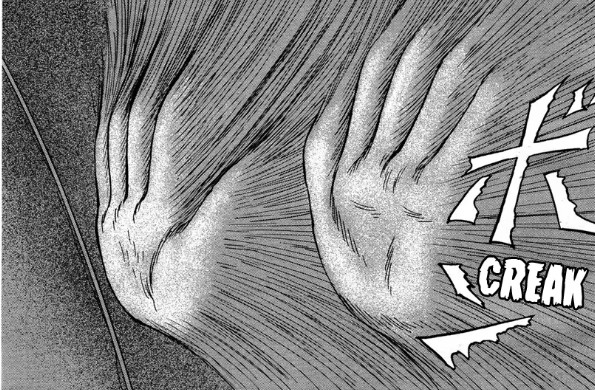
Mountain of Gods: Precipice of the Unknown is a great short story to give you the creeps before bed time. The character of the Sneering man will surely stick with you after reading — I think that face is almost etched on the back of my eyelids. 😀
Due to it’s minimal graphic horror, I think this would be perhaps a good introduction to Junji Ito’s work, for those who haven’t read his stuff before. I mean, it in no way represents the crazy imagination that you will find in say, Uzumaki or Tomie. But if you are looking to tread lightly into Ito’s world, this could be a good choice for you.
I’ve only been able to find this story in a translated version for my own language on Manga Rock. But please always support Junji Ito where you can by buying his official works.
Be careful when you go out walking…
Kirie’s admirer is just like a Jack in the Box — he keeps jumping out at her at inappropriate times. But what happens when he takes it too far?
My love for you will stop this car!
Mitsuru believes strongly in his love for Kirie
Kirie Goshima has an admirer, and an annoying one at that. His name is Mitsuru Yamaguchi and he has a very frustrating habit. He keeps on jumping out and surprising Kirie at moments when she least expects it. One such time is during the walk home from school with her friend Shiho. Shiho warns him off, but he continues to annoy Kirie nonetheless. For him, this is how he shows his love for her.
After a little time, he decides to send Kirie a present in the mail. However, instead of opening it she decides to meet up with him to return the gift. He seems sincere in his affection at this point and decides to prove his love once and for all. Declaring that his love is strong enough to stop traffic, he jumps out into the path of a moving car. A final jump that sees his body wrapped around the front wheel of the unsuspecting driver.
After Mitsuru’s funeral, Kirie is wracked with guilt over his untimely death. But it may not be the last she has heard from him – this is Kurouzu-cho after all. The spiral is ever-present and can make all sorts of things possible.
One evening while talking through the grief with her boyfriend Shuichi, she gets a terrifying vision from the gift that Mitsuru had left her. She discovers that the present is a very apt one for it’s sender — it is a Jack in the Box. The Jack in the Box seems to tell her that his death was indeed her fault. And not only that, but that Mitsuru will come back for her too.
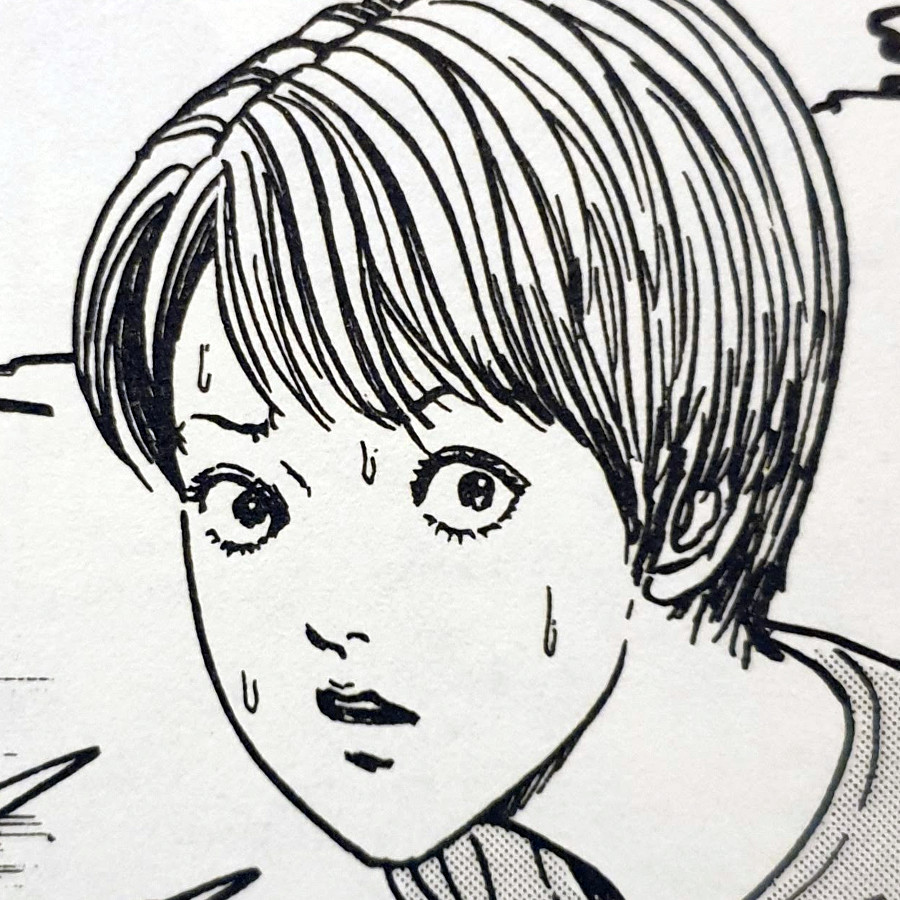
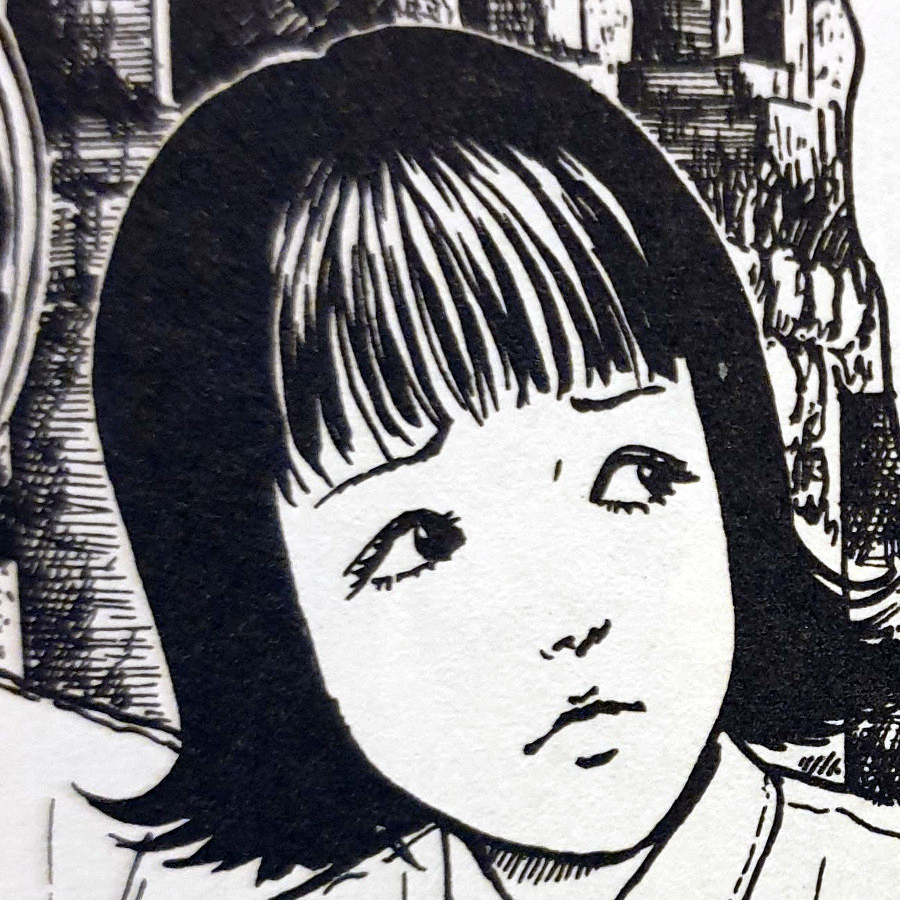

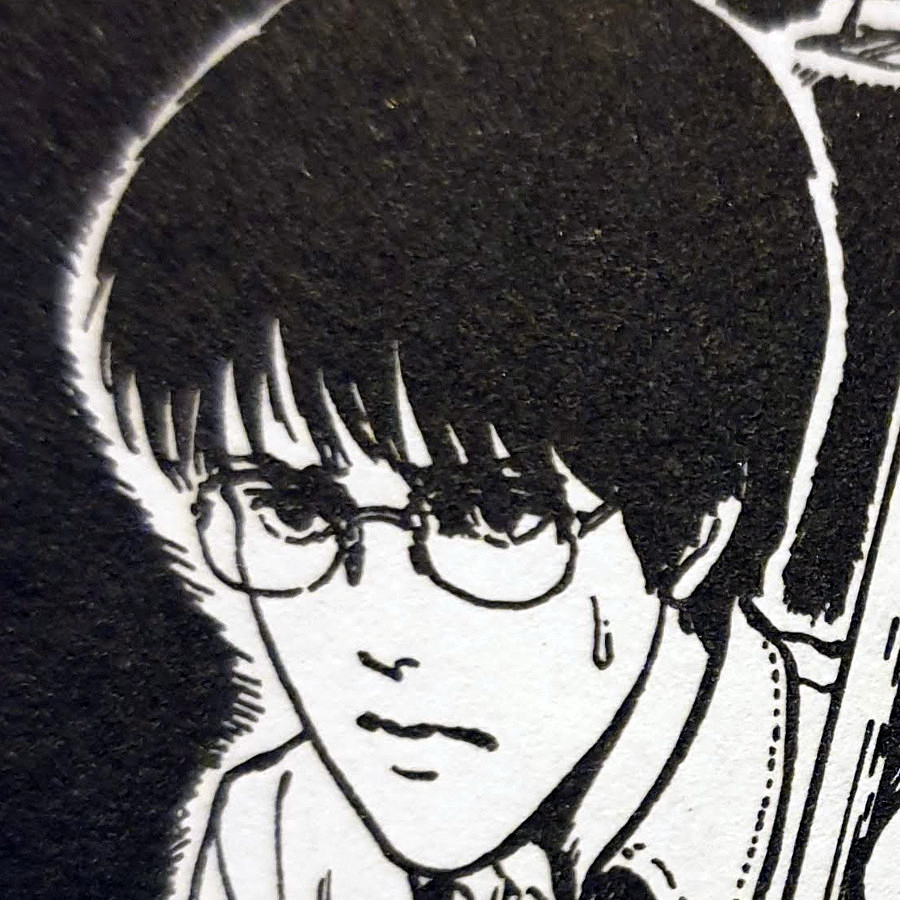
Deciding to find out the truth behind the Jack’s whispers, and to try and rid her head of its voices, Kirie and Shuichi take a shovel to Mitsuru’s grave to ensure he is in fact dead. But they are not prepared for what they find in the ground.
When seen from above, a coiled spring will display the shape of the spiral. Not only that but the spring can also represent the releasing of stored energy. This idea could well be what gave birth to the character of Mitsuru. But it isn’t until the closing pages when this becomes apparent. Once you’ve read it once, the spiral can be seen throughout this chapter. He is the metaphorical coiled spring jumping out at Kirie again and again. But until you’ve read it, the spiral is indeed subtle.
Inanimate objects with human likeliness always have the potential for horror. Just think ceramic dolls and old toys in the attic. But what I loved in this chapter was that not only did Junji Ito manage to depict an otherwise innocent Jack in the Box as demonic and foreboding. He also managed to have it perfectly represent the key character, Mitsuro.
The spiral has had a very visual presence in the town so far. It has appeared in cremation smoke, pottery and even throughout victims’ hair. But this is perhaps the most subtle that the spiral has been up till now. In fact, I would be so bold as to say that this chapter could almost be read outside of Uzumaki altogether.
The way in which Ito ties the character of Mitsuru to that of a Jack in the Box was a stroke of genius. Especially when he later makes use of the spring from the car that killed him to make his complete transformation. Yes, the spiral is present in the springs throughout, but take the spiral obsession out of the equation and you still have a strong horror nightmare with an almost self-fulfilling prophecy.
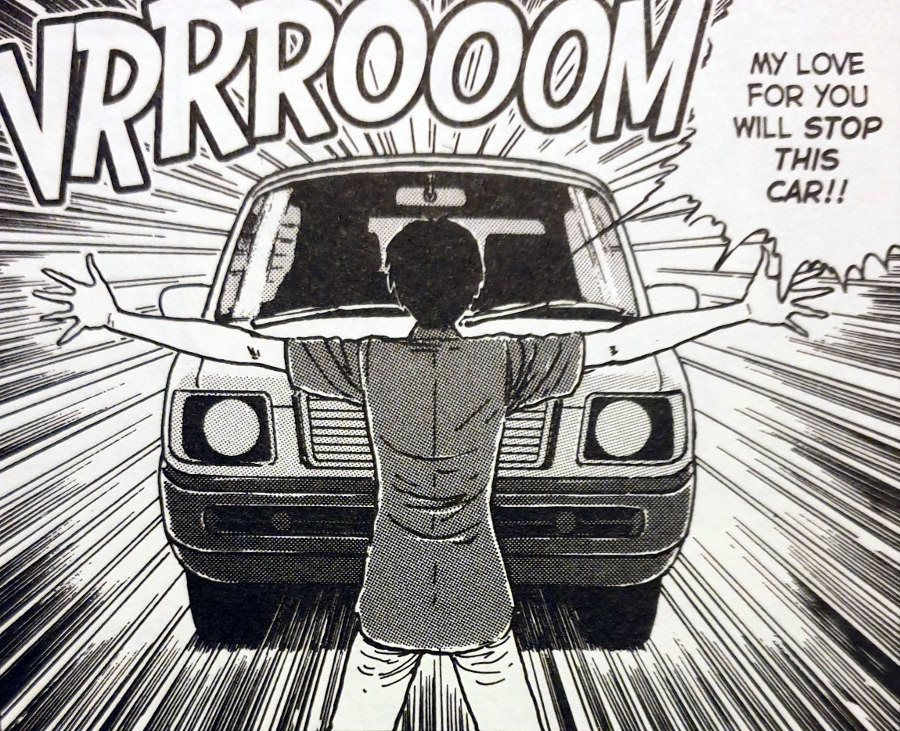
As I began writing up my thoughts on ‘Jack in the Box’, I began to notice how the chapter’s structure itself felt just like a coiled spring. With each unwanted jump scare from Mitsuru winding up the metaphorical coil until he is stopped dead in his tracks by that car. That impact and his winding quickly around the front wheel of that car are the first glimpses of horror we see, and the first release of the coiled spring of the chapter.
Once the funeral is done with, Kirie’s descent into guilt and the foreboding presence of the Jack in the box toy, wind up the chapter’s final spring. It is wound up tightly and held with each step that her and Shuichi take through that graveyard. Until those final pages and the explosion of energy that shoots out towards them. The second spring is released and the two of them are directly in its path.
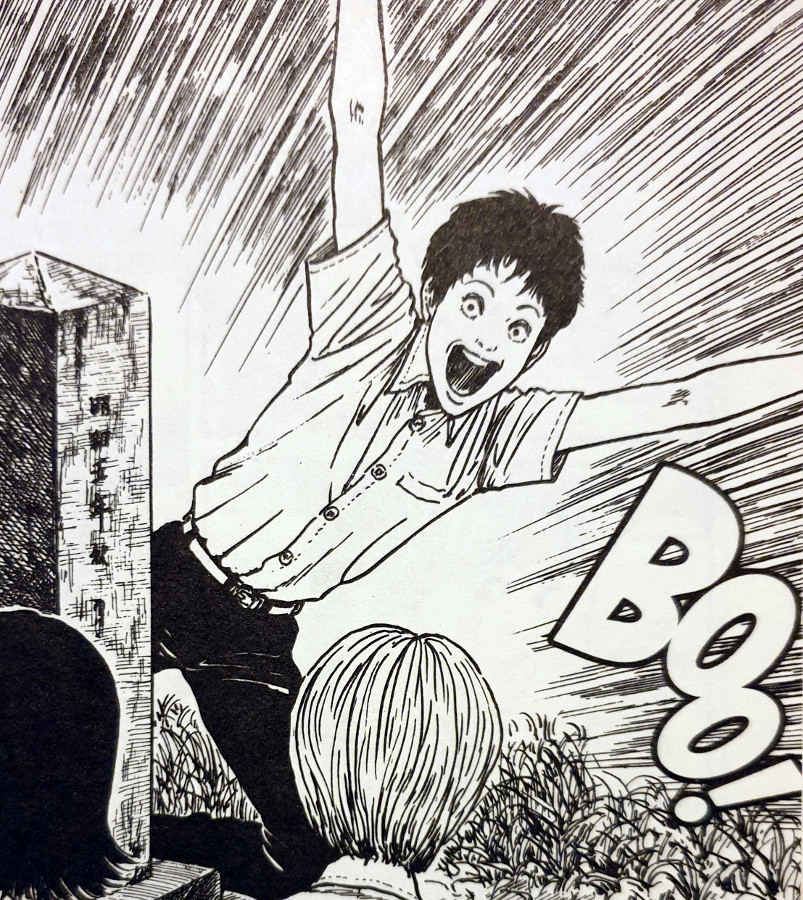
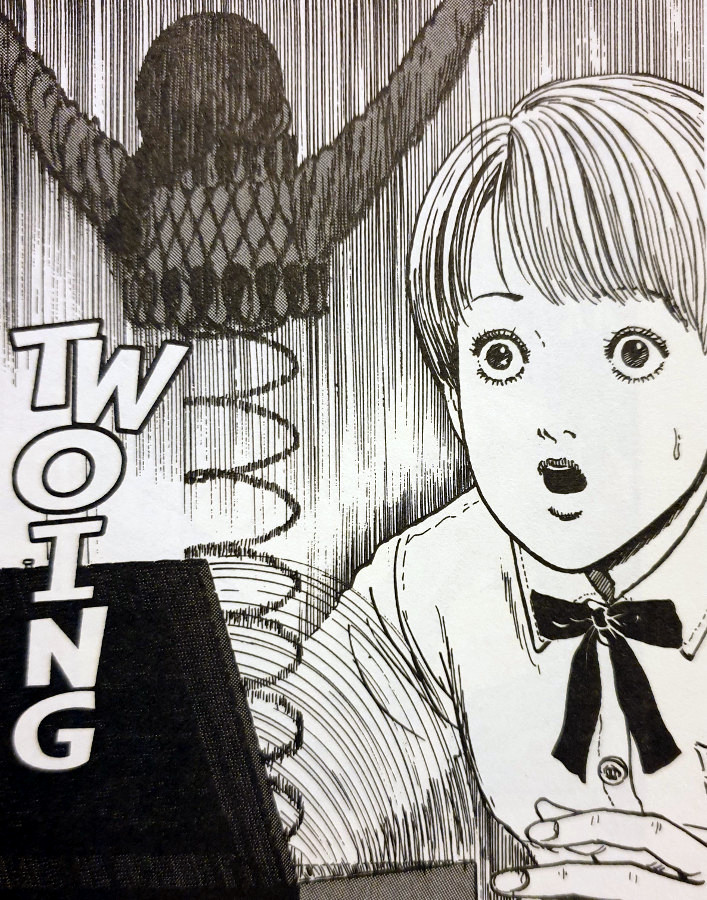
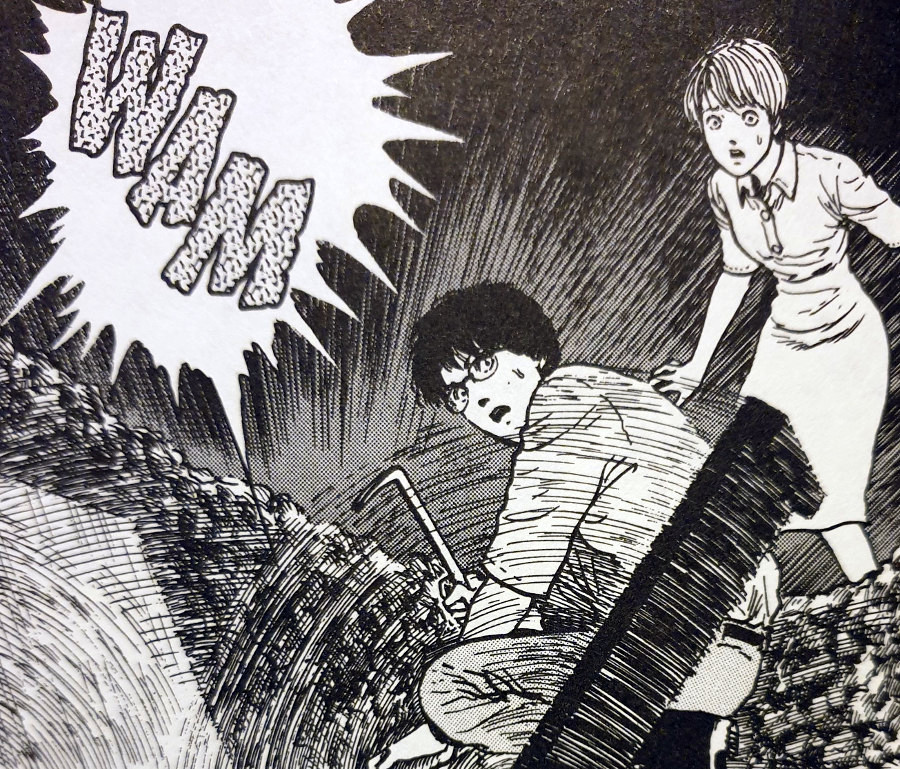
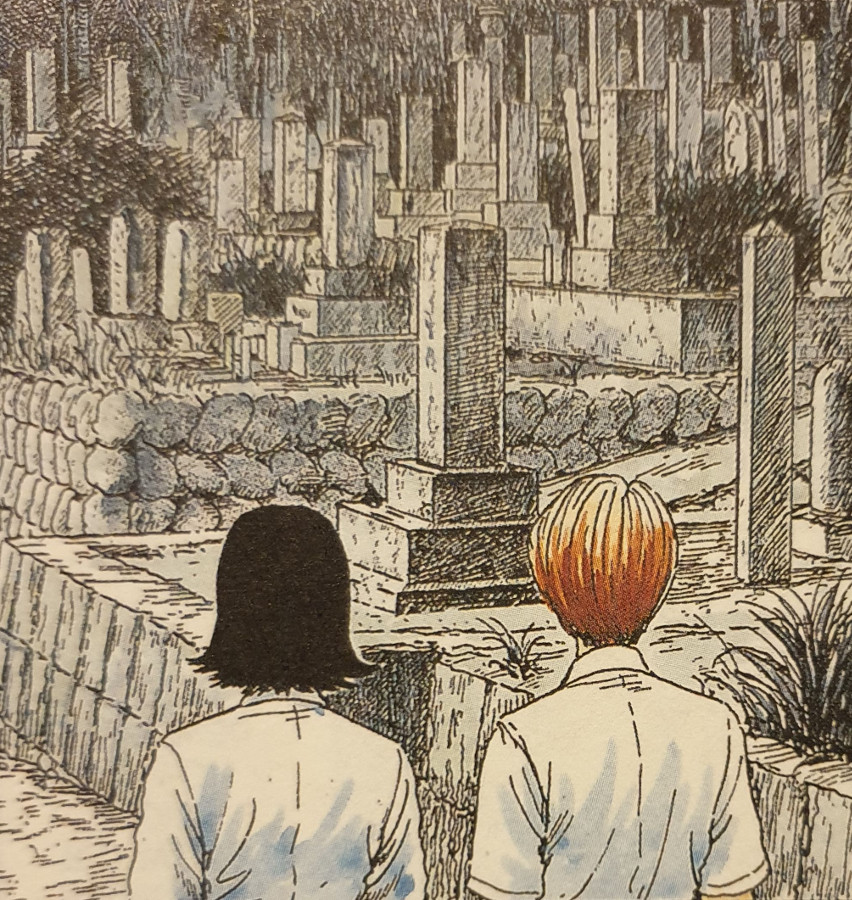
I may be reading too much into these stories, and perhaps seeing things that I want to see, but that is precisely why I’m writing these thoughts up. I just love seeing what my mind can find beneath the surface of Ito’s work — and as I have quickly come to realise, there is always more to find beneath his expertly-drawn panels than meets the eye.
Jack in the box is definitely a chapter that can be enjoyed on its own and without any prior context to the preceding Uzumaki chapters. Yes, there are mentions of the spiral cremation smoke trails from The Spiral Obsession opening chapters, but they are only mentioned in passing. And they are not needed to be fully understood for this chapter to be enjoyed.
Jack in the Box is one of my favourite chapters from the Uzumaki collection. Something about the character of Mitsuru and the enjoyable absurdity of his constant jumping out at Kirie have stuck with me. I think that, along with the following chapter The Slug, are images that have stayed with me the strongest since my first time reading Uzumaki some years ago.
One of the great things about this chapter for me, was how it is almost ambiguous in its final half. With both Kirie and Shuichi having already come face to face with the spiral, who’s to know if what they experience in that graveyard is real? (it probably is).
Was it just a nightmare? Who knows? (probably not). But one thing is for certain – Junji Ito sure knows how to tell one hell of a great story.

It looks as though Junji Ito’s influence is being spread ever further, as described in this article on VG247. The upcoming game Diablo 4 seems to be taking some inspiration from the Horror Manga master: https://www.vg247.com/2019/11/02/diablo-4-inspired-junji-ito-anime/
Ito is a man who managed to make fish scary, creating a story where they’re being mind-controlled by a sentient bacteria. He also has a thing for triggering people’s trypophobia so expect some disgusting enemy designs in Diablo 4 to match that inspiration.
Diablo 4 inspired by Junji Ito Manga, by Kirk McKeand
Flesh Colored Horror focuses on the suffering of a young boy at the hands of his twisted and skin-obsessed mother.
I’m not tearing. This is the peeling…
Chikara as he destroys other childrens’ artwork.
Momoko Takigawa is a school teacher who teaches young children at the Hikariyama Kindergarten school. Her students are all regular, everyday children… except for one — Chikara.
Chikara is a scary-looking child, whose veins trace dark lines over his bald head. His eyes are blank white and piercing, and his mental state is violent and unstable. Chikara often lashes out at his fellow students and is unable to form any sort of positive bonds with them.
After a bloody incident involving Chikara and another student, Kosuke, he is expelled from the school and instructed to never return. However, one day he follows his old teacher Takigawa home from the school, and she agrees to take him inside before escorting him back to his own home.
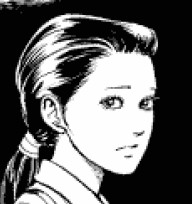
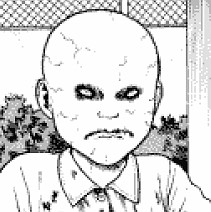
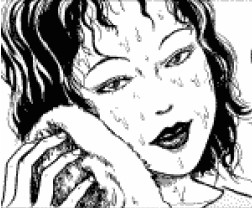
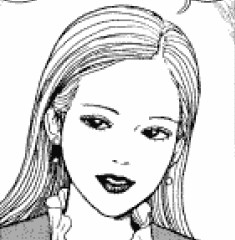
But when the teacher starts to become more involved in the boy’s life and in his well-being, a horrifying and violent secret is revealed about the boy’s family. We learn of his mother’s obsession with beauty. And we learn the lengths she’s willing to go, in order to give her son that beauty. All with no care as to the cost of his mental or physical well-being.
But what lengths will his mother go to, to finish what she has started? And how much can her son endure before he finally snaps?
The subject of a child’s abuse is always a delicate one to approach in fiction — and rightly so. Junji Ito has dealt with these before with stories like The Bully and the Tomie chapter Boy. But in Flesh-colored horror, the pain that Chikara endures is on a whole new level from those — at least in my opinion.
I felt that Ito approached this subject very tastefully. He seemed to keep it grounded but still within his story’s crazy boundaries. My initial feelings towards Chikara were those of disgust — the desired effect, no doubt. But by the end I was fully on his side after having learnt his story. And not only that, but it even taught me something about not judging people too quickly.
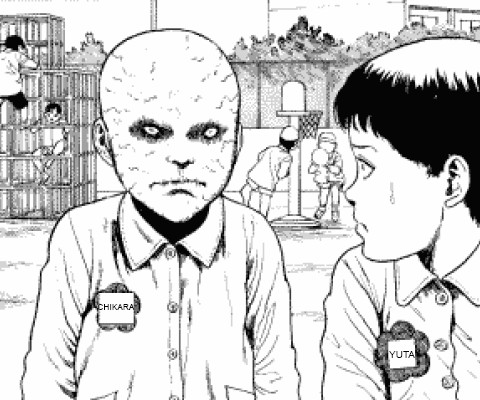
Although the tearing of the school paintings was a spiteful act, it was only what Chikara had picked up from home. We see his mother’s obsession causing her to peel away their home’s wallpaper — a metaphor for the peeling away of skin to what lies beneath.
And when Chikara attacked Kosuke and caused his face to bleed all over, it was a dreadful thing to do. But again, although I don’t condone it, this too was a learned behaviour from his mother. From all of the peelings away of skin she has forced him through.
This is normal life for Chikara, and it truly is a shame — both for him and those around him.
There is a saying that goes “Beauty is only skin deep”, which means that a person’s character is more important than how they look. This saying is no more apt than in Flesh Colored Horror — albeit in a slightly tongue-in-cheek way. I loved the insane idea of going to the extremes of trying to preserve one’s beauty by removing the skin and bathing it in saline solution. Then admiring the muscles and tendons beneath as a thing of beauty. Ito definitely has a way of creating these fresh and crazy characters with very unique quirks. And he often does so by taking very normal behaviours, like using skin cream to maintain one’s complexion, and turning it up to crazy.
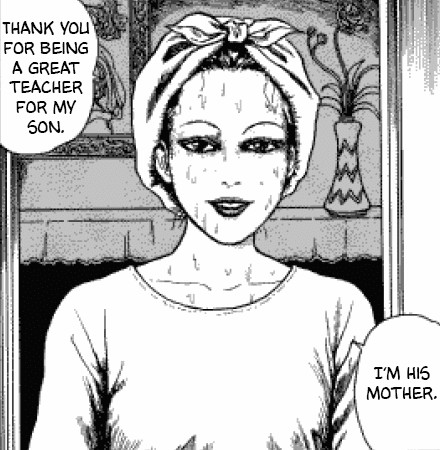
I also enjoyed the exploration of the mother’s obsession with her beauty — an obsession which ultimately leads to her undoing. I believe that the loss of her husband in the way that he went, directly led to her strange form of body dysmorphia. It was just a shame that her twisted notions of beauty were then forced upon her child.
But what I found most interesting in this story, was how we initially see Chikara. We see him as violent and almost-grotesque looking. But later we learn how both his appearance and his actions are a direct result of his terrible upbringing.
And on the flip side of that, we see his mother and his auntie — both beautiful women, who initially come across as friendly — who are later revealed to be the most despicable characters in the manga.
Beauty is only skin deep.
I’m glad that Chikara got to have some kind of revenge on his mother. Burning away his mother’s skin before tearing her exposed tendons with his bare hands was a hell of a way to go. But strangely enough, it felt like the logical result of what the boy had to endure. She created this viscous animal within her child, and now that very same animal is being unleashed on its creator. It is so crazy and so unbelievable, but it is so very enjoyable to read too, and definitely very Ito-esque.
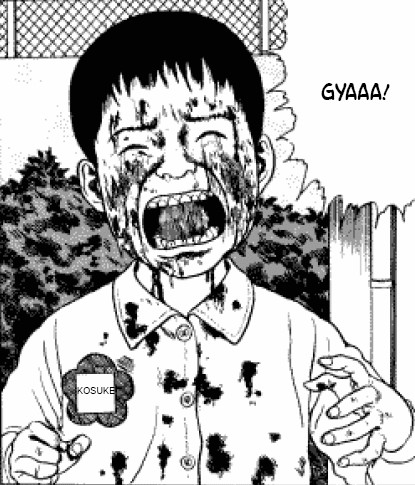
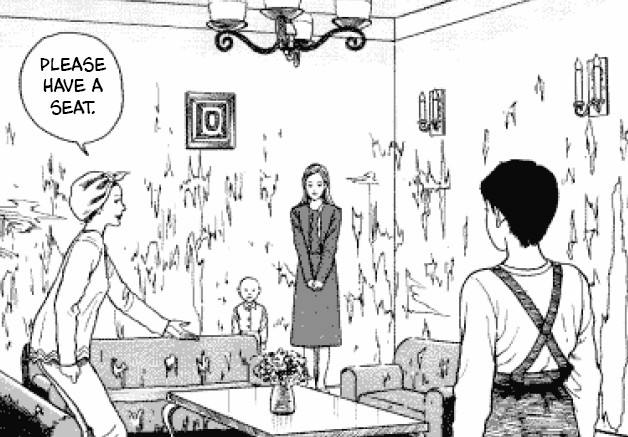
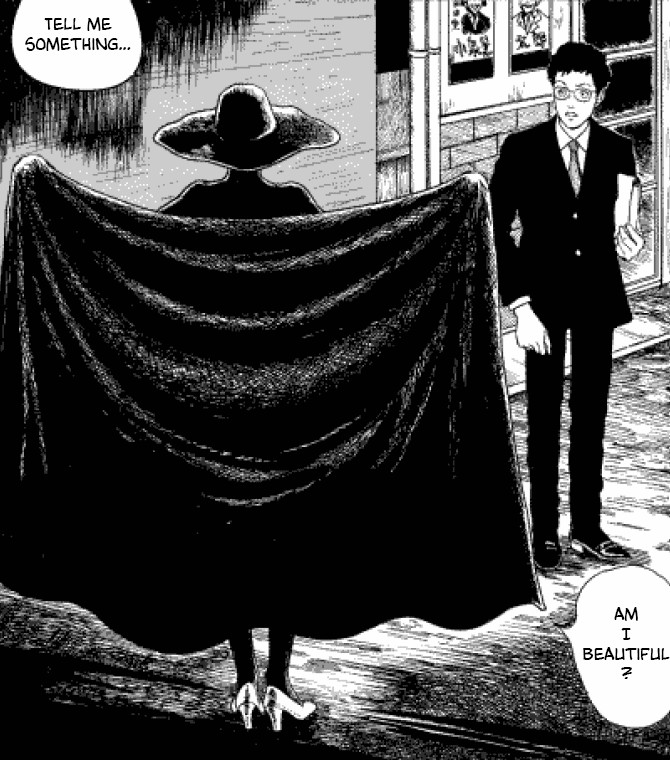
Flesh Colored Horror blew me away when I first read it, I wont lie. The serious tones of a child in danger drew me into the story — I knew it was going to be a thought-provoking and heavy piece. But it was it’s crazy ending and visceral imagery that moved this manga up into my top ten.
This isn’t one for the casual manga reader, I don’t think. If you like your horror to be dark and visceral, then great. But if you prefer easy jump scares and a minimal amount of flesh and blood, then tread carefully; I don’t think this is for the feint-hearted.
Any fan of Junji Ito’s who hasn’t read Flesh Colored Horror yet will get a real kick out of this one. And if you do enjoy it, you are sure to end up reading it multiple times.
p.s. Bonus Points to Ito for reminding me of Hellraiser 2 with this one. The image of the woman’s skin being pulled off like an all-in-one body suit immediately made me think of Julia’s demise from that film. 🙂
An interesting 20-minute interview with Junji Ito as he is escorted around the Winchester Mystery House.
I love how Ito’s favourite band is The Beatles!

Death Stranding is easily one of the most hotly anticipated games of recent years. From the creative genius Hideo Kojima, this epic, world-traversing PS4 game is sure to push boundaries and impress in many ways.
What I discovered today, is that there could very well be a cameo by none other that Junji Ito himself. Ito had previously been working with Kojima on the now-cancelled Silent Hills project. (I still shed a tear at the mere thought of what that could have become). But it seems that they have remained in touch.
Here are the images I have found after somebody shared them on Facebook. I have yet to confirm these as being true, but I pray to the gods of horror that they are.


Check out Death Stranding on the PlayStation Store!